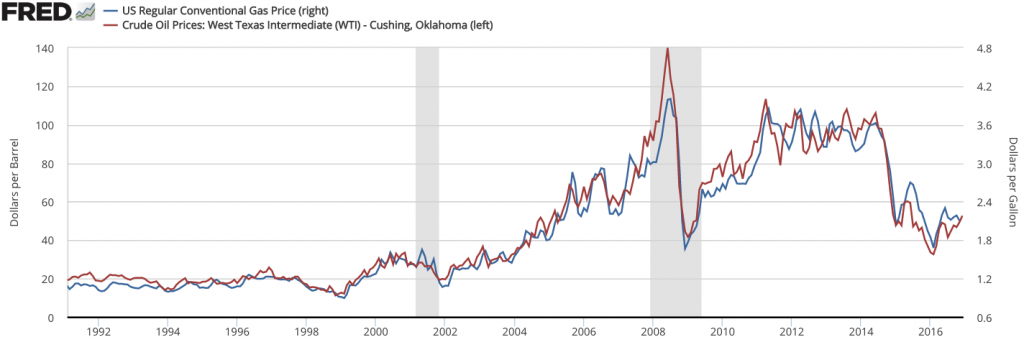To a Professor of Geology, and as someone with little training in Economics, the feasibility of cheap oil is difficult to fathom. Much of western Canada’s oil is barely economic at $50 USD/bbl: this includes McMurray Formation Ultra-Heavy Oil, Clearwater Formation Heavy Oil in parts of the Cold Lake Field, Mannville Group heavy oil in Saskatchewan and eastern Alberta, and tight oil and gas in Triassic measures of British Columbia. Some of Alberta’s oil is downright expensive, such as Steam Assisted Gravity Drainage (SAGD) projects in McMurray, which can have costs of production near $90/bbl (see note 1).
Two months ago Business Insider published a chart that showed the projected 2020 levels of production along with the mean operating costs of various oil plays. These included Canadian Oil Sands ($74/bbl), North American Shale (Fracing) plays ($62), Ultra Deepwater ($57), various onshore and offshore locales ($43 to $57), and onshore Middle East ($29). The median cost of production within the next 5 years should be close to $55 per barrel, suggesting that low oil prices will, in the future, result in immediate production decreases and prop up the price of oil at least near the $60/bbl range. (see http://www.businessinsider.com/markets-chart-of-the-day-december-29-2014-12)
So, how does oil even fall below production costs? I suppose the answer is that oil production has a lot of momentum. There is no quick response available to producers to check oil production as prices drop. The reasons for this are variable and include a technical necessity for production (e.g. a steam operation is a several-year engagement and once the steam is in the ground, the resource has to be produced before the steam condenses), maintaining shareholder confidence, and feeding downstream operations. It is worth noting that 2 of the fasted growing oil producers over the past 5 years are the United States (47.5%) and Canada (23.1%) (see http://www.businessinsider.com/us-energy-production-boom-charts-2014-12). Not only has North America destabilized oil production, the increases are from highly technical giant oilfields, where production cannot be immediately curtailed.
There is no doubt that producers do feel the pinch. In the Globe and Mail today (https://secure.globeadvisor.com/servlet/ArticleNews/story/gam/20150228/RBCDCOVERNORTHSEAFINAL), EnQuest CEO Amjad Bseisu was quoted “The North Sea was struggling even at $100 [U.S.] oil, I think we’re in a defining moment for the North Sea. We could either see precipitous decline or the industry will have to reinvent itself.”
In Alberta, there is a sense of unease, and although no one is set to jump off the cliff, it is a MUCH quieter place than it was one year ago. Forgotten in all this is that heavy oil (and other unconventional resources) in Alberta are 100-year resources. Our children’s children are likely to be mining and steaming oil from the Cretaceous rocks of Alberta (see note 2). We are in this for the long haul and need to be prepared for ups and downs in oil prices.
This leads us to our discussion. Students of Geoscience, how do YOU think that the price of oil can be better managed? Through production management? Flexible royalty agreements? More carefully managed expansion and development? If oil proce cannot be managed, what other things could be done to weather boom and bust cycles?
Notes:
1. The cost of SAGD production is extremely variable and has ranges between $30 and $95 per barrel. A number of factors influence SAGD optimization, including geological heterogeneity, reservoir thickness and continuity and saturation and viscosity of the heavy oil.
2. Not just the Cretaceous Measures, but unconventional tight resources in the Triassic, Devonian and Mississippian units.

